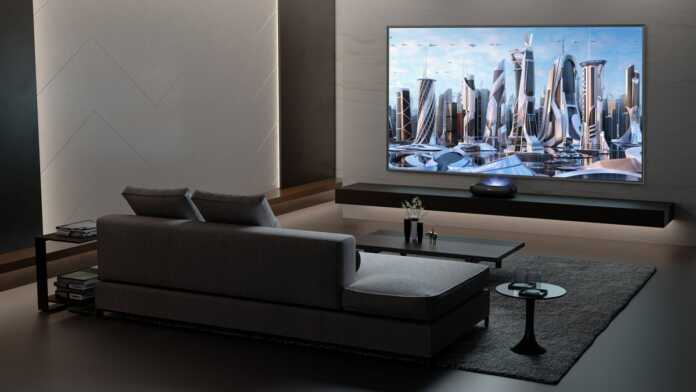The German camera pioneer and the Chinese electronics giant want to work together on the further development of short-throw projectors.
Germany’s Leica Camera AG is collaborating with Chinese electronics manufacturer Hisense to develop laser TVs. Both companies have entered into a “long-term partnership” for this, Leica announced on Tuesday in Wetzlar. The cooperation is intended to bring together Leica’s “many years of expertise” in the development of projection lenses with Hisense’s technologies.
On this basis, the companies want to further develop the device class. “Home cinema entertainment is a rapidly growing market,” explains Leica CEO Matthias Harsch, who sees this as a “promising opportunity” to win a new group of customers for the company. “As the technology and market leader in the field of laser TV systems, Hisense is the ideal partner.”
Leica Cine 1 at the IFA
In view of Leica’s many years of experience with the high demands of optical projection systems, this is a “logical next step towards new technologies and other markets”. The company intends to present its first laser TV from the Leica brand shortly: The “Leica Cine 1” will be on display at the IFA in Berlin (September 2 to 6, 2022).
“Laser TV” are short-distance projectors in which three lasers for the primary colors project the image onto a screen. In principle, this can also be done on a white and flat wall, but the manufacturers recommend a special screen for optimal results.
The projector is set up a short distance below the screen and, depending on the version, can project images with a diagonal of up to 120 inches (about 3 meters). It also depends on the optics, which ensure correct projection at this short distance.
Projector problem
When projecting from a short distance, the disruptive factor of someone running through the image is eliminated. Nevertheless, laser TVs have to struggle with the same problems as distance projectors: Too much ambient light is annoying, the room should be darkened a little better. Compared to the TV competition from the LED and OLED camp, colors look dull and washed out in brighter surroundings.
In addition to Hisense, there are also models from Chinese manufacturers such as Xiaomi or Vivo on the market. Sony and the South Korean electronics giants Samsung and LG also have a few laser TVs on offer. The devices still occupy a niche, which is also due to the price. It starts at around 2000 euros, and then there are the costs for the screen. In a package, the systems easily cost double to five figures.
Hisense relies more on this device class than other manufacturers. “Hisense is committed to promoting the global development of laser TV as a new industry,” said President Lan Lin. According to Hisense, sales of Laser TV abroad more than tripled last year. Compared to smart TVs, however, the laser devices sold should also be manageable at Hisense.
(vbr)













